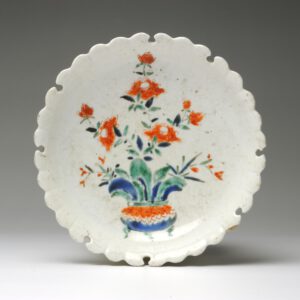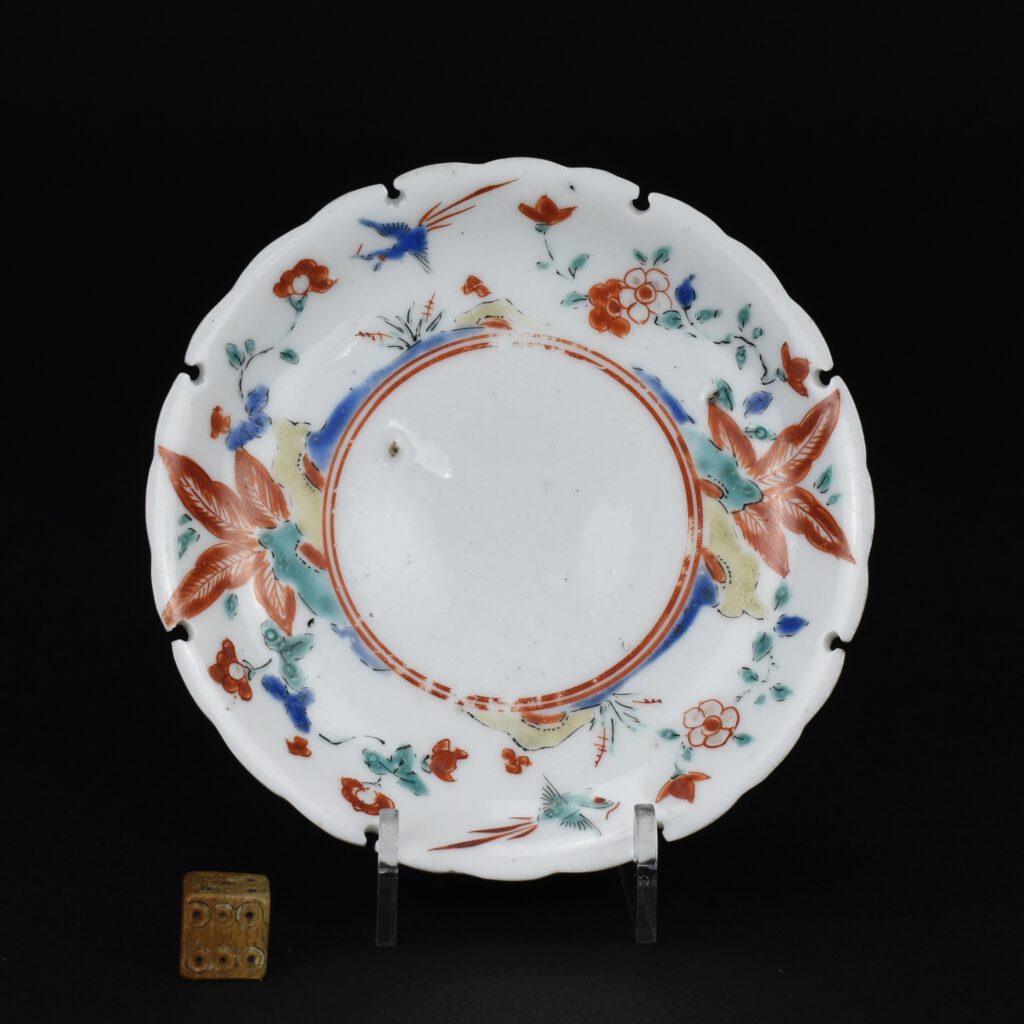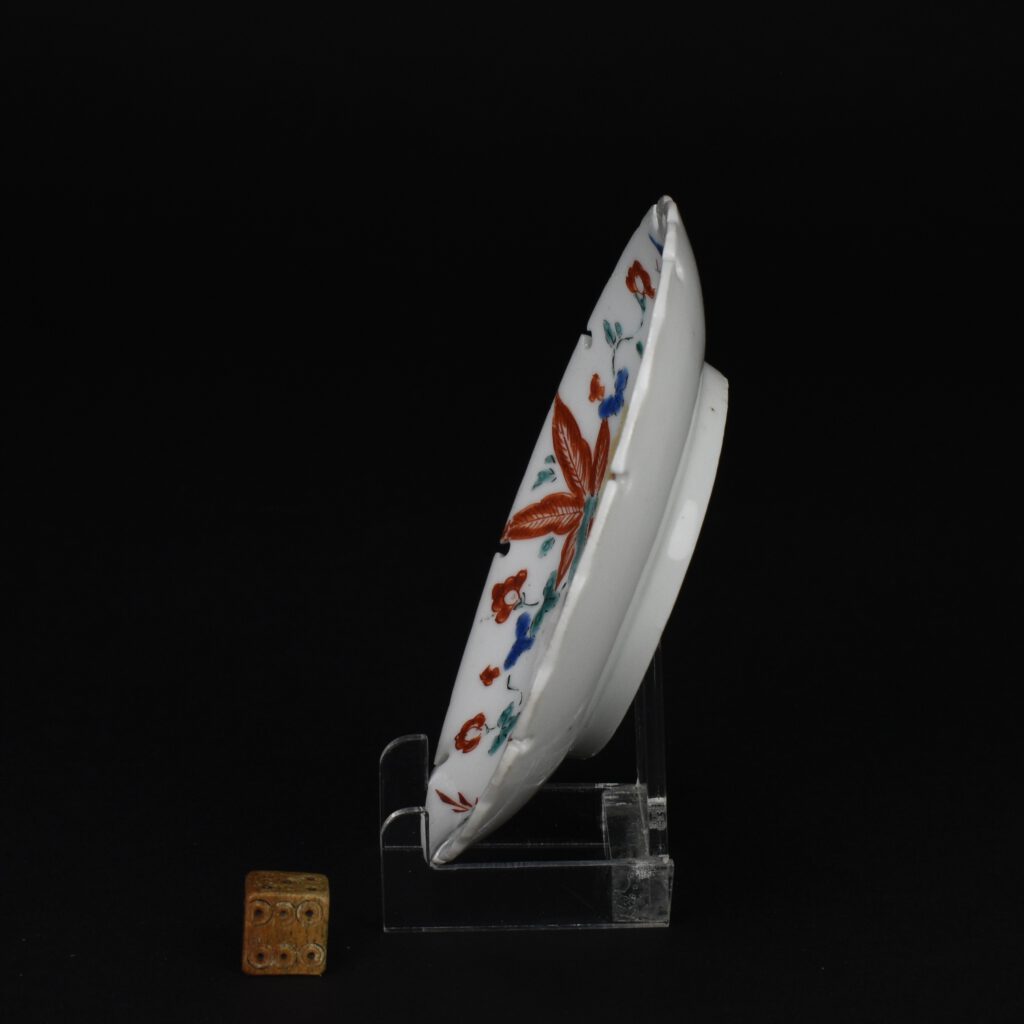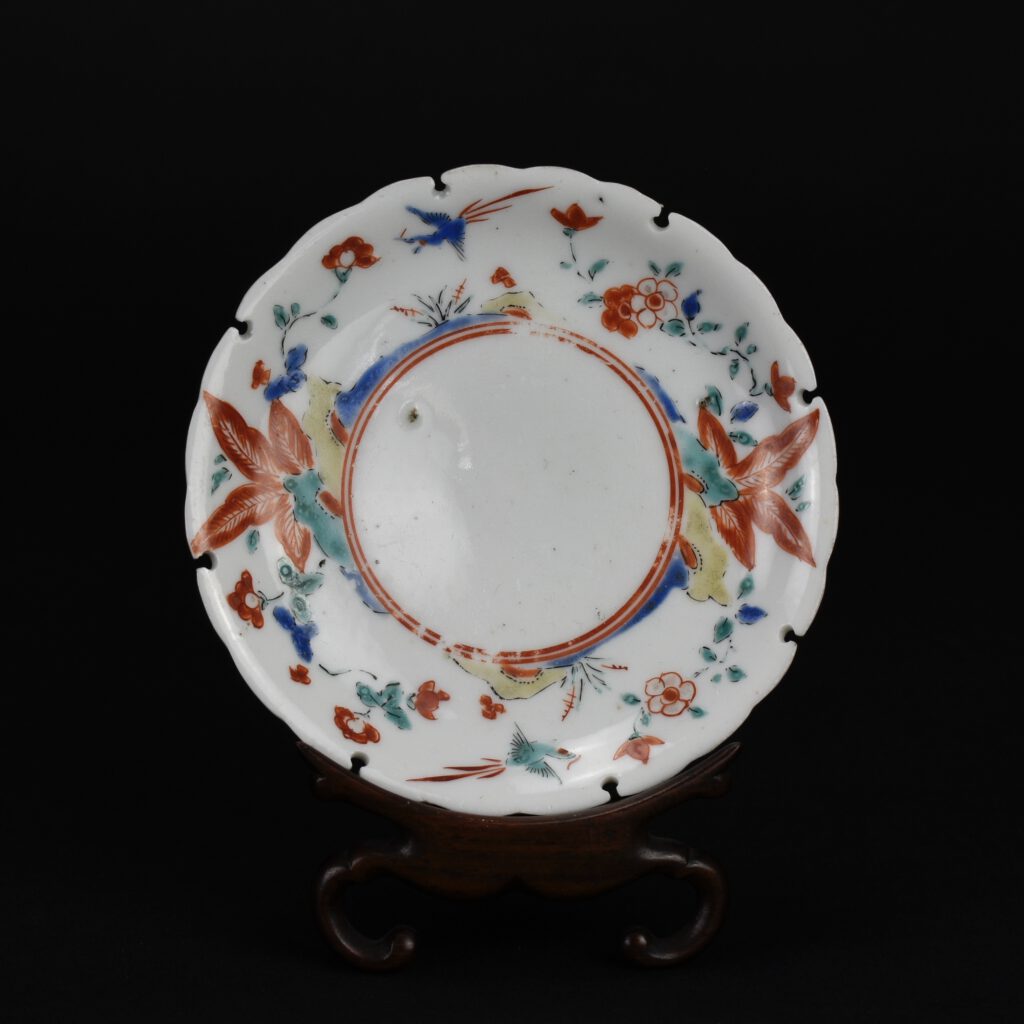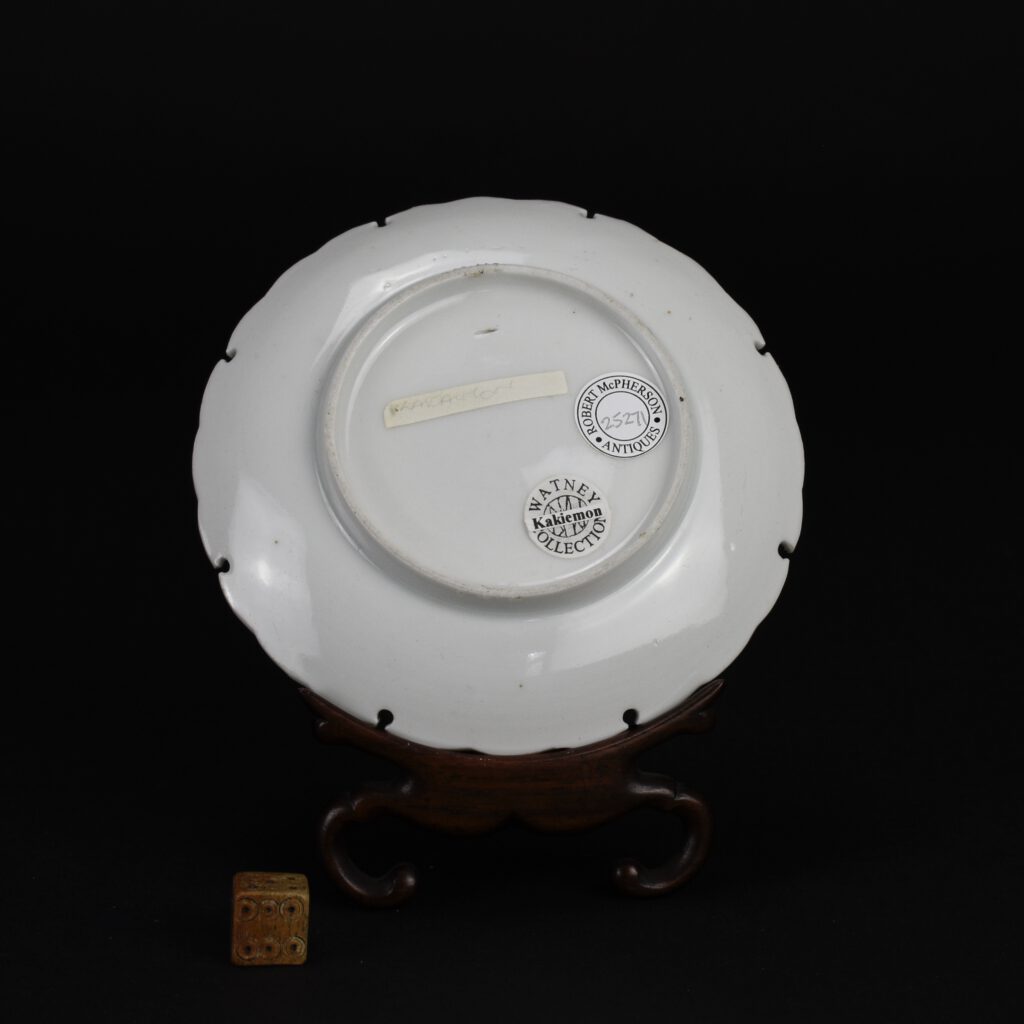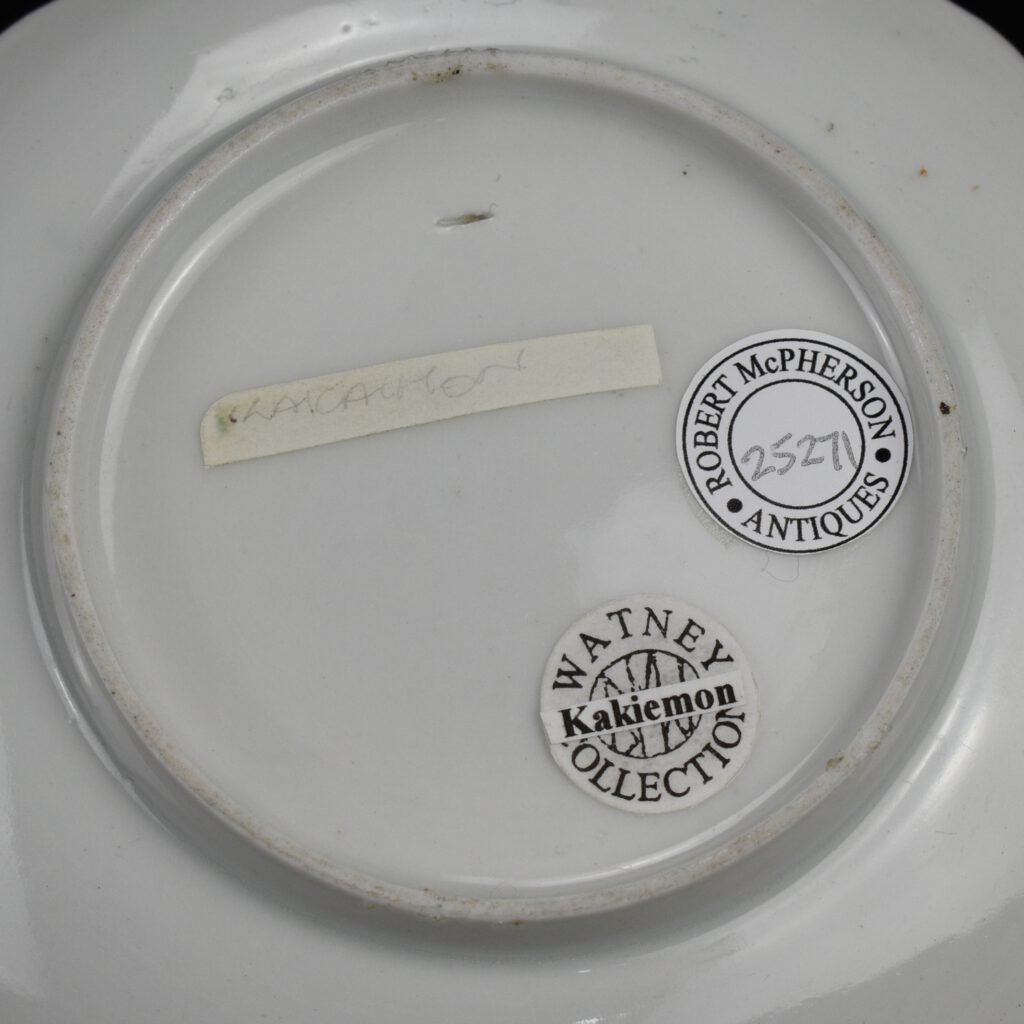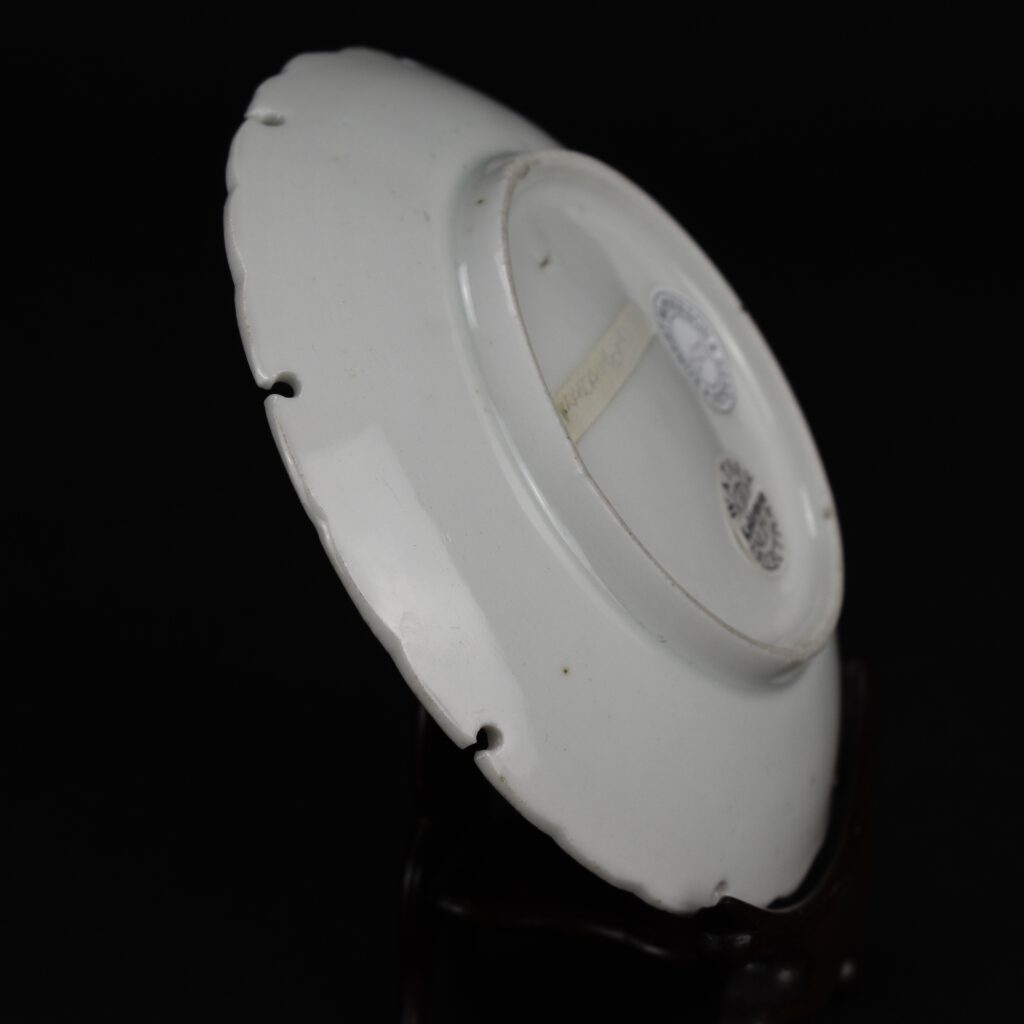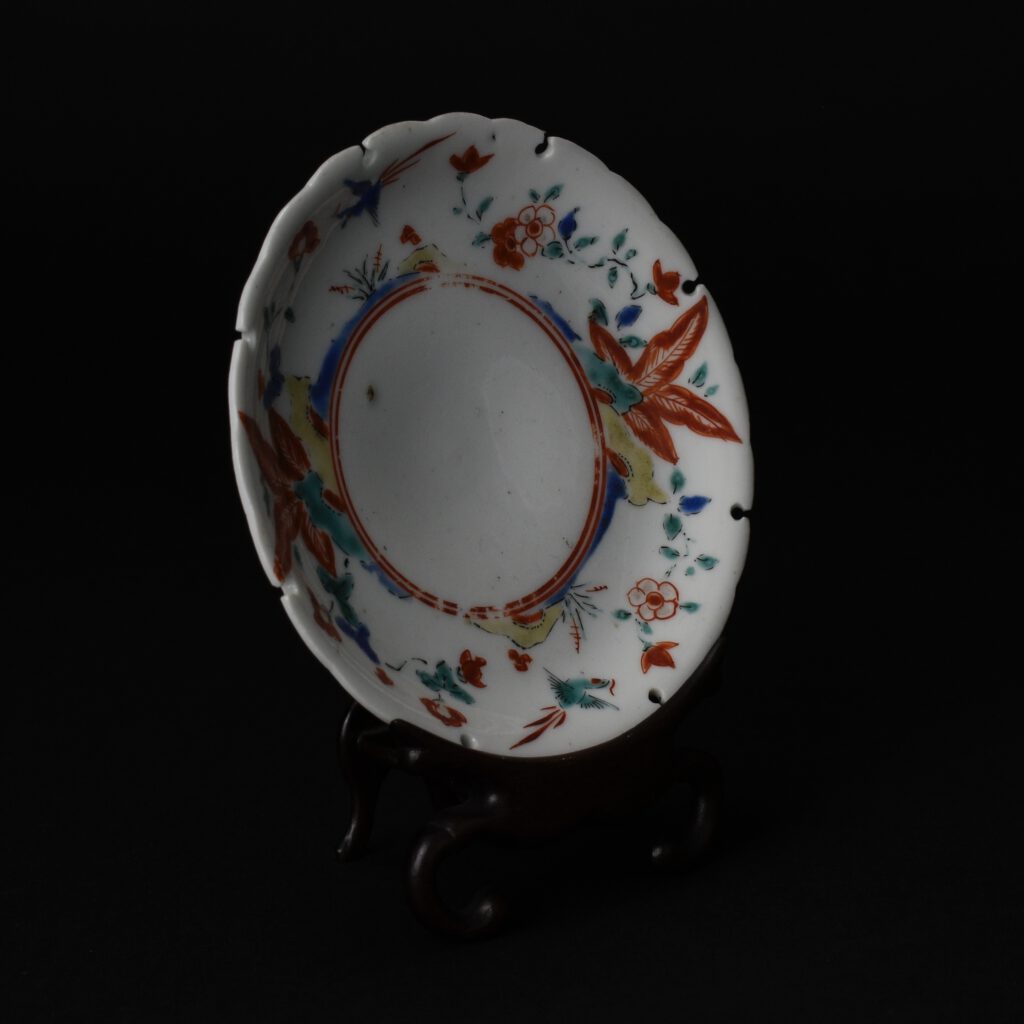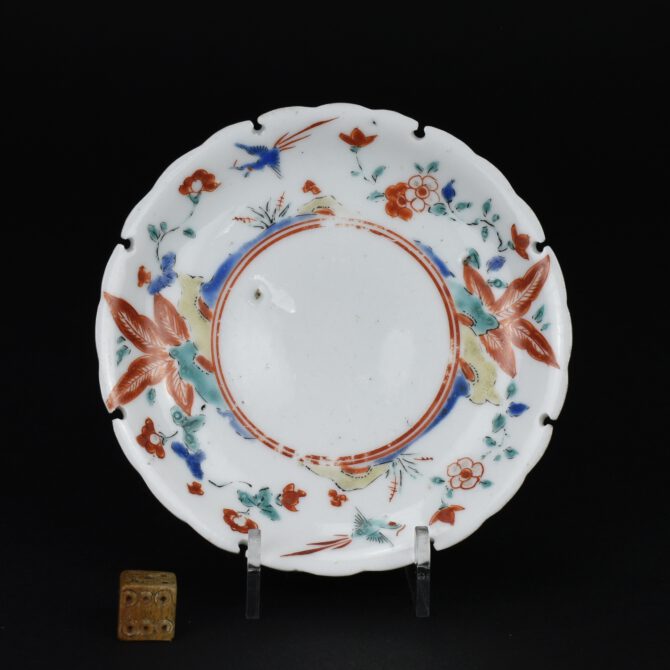
Japanese Kakiemon Porcelain Saucer c.1700
A Small Kakiemon Porcelain Saucer, Kakiemon Kilns, Genroku Period 1688 – 1704. This Japanese porcelain saucer is in the form of a snowflake, sometimes referred to as a snow wheel. The design is of course fanciful as the true form of a snow flake had yet to be determined. The decoration is in typical Kakiemon colours, is of two birds among plants and flowers. See below for a Kakiemon snowflake shaped dish in the National Museum of Scotland.
SOLD
- Condition
- Some rubbing to the enamels.
- Size
- Diameter 10.8 cm (4 1/3 inches)
- Provenance
- Dr Bernard Watney 1922-1998. Academic, collector and author of numerous books about English porcelain. He was very interested in European and especially English decoration on Chinese porcelain. He had a large collection that was sold by Bonham's in London. He was bright, rather certain about things. He was extremely funny and joyously rude, certainly always good company. He was also an expert in the field of corkscrews among other things.
- Stock number
- 25271
- References
- A related snowflake dish is in the National Museum of Scotland - A.1925.661 (see below).
Information
Kakiemon Porcelain
Kakiemon decoration is usually of high quality, often delicate and with well-balanced asymmetric designs. The designs were normally quite sparse emphasizing the fine white porcelain body known in Japan as Nigoshide (milky white). The opaque white milky Nigoshide body was used on the finest pieces, it appears that it was reserved for fine quality enamelled decoration. Kakiemon porcelain was decorated with a great variety of imaginative designs which include elements such as the `banded hedge`, `flying squirrel`, and the `Quail and Millet` design. The `Three Friends of Winter` were also a very popular group of designs, other subject taken from nature include flowers (especially the chrysanthemum, the national flower of Japan) as well as birds and rock-work. Figural subjects such as the `Hob in the Well` were also popular. This design illustrates a Chinese folk tale where a sage saves his friend who has fallen into a large fish-bowl by throwing stones at it, braking open the pot. Banded-Hedges were a formal device within Japanese traditional gardens, they were often incorporated in designs, includes `The Three Friends of Winter` (Pine, Bamboo and Prunus). These three plants signify perseverance, as neither the pine nor the bamboo shed their leaves in winter and the plumb (Prunus) flowers at the very end of the winter, heralding the arrival of spring.
Another Kakiemon Snowflake Shaped Dish
Dated by the museum to 1660 - 1689
